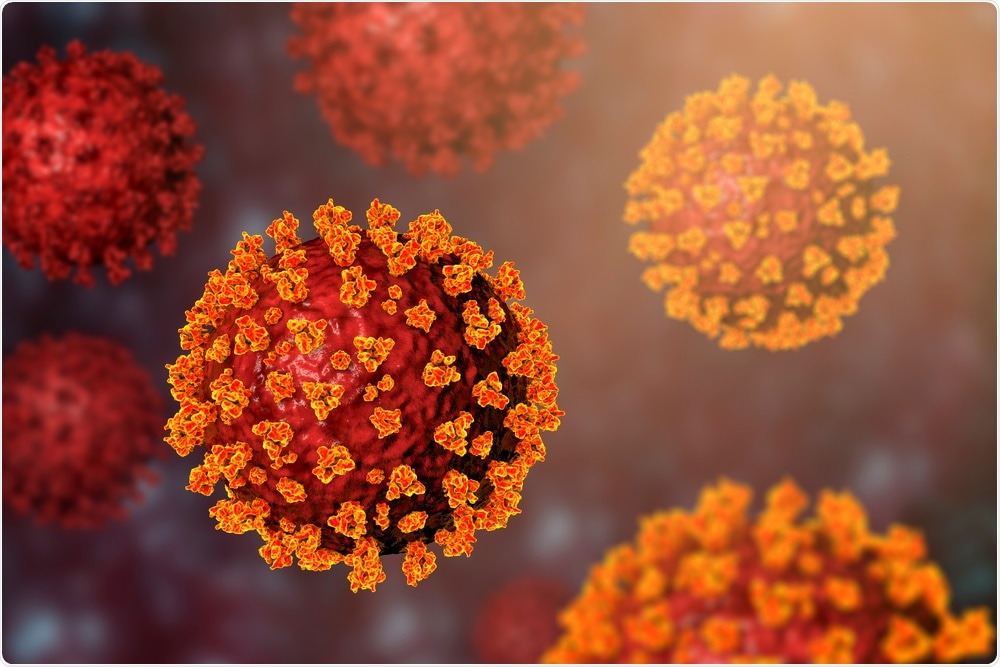A new study discusses the presence of genetic diversity in severe acute respiratory syndrome coronavirus 2 (SARS-CoV-2) circulating in Brazil, with reference to the susceptibility of the population to the virus.

Study: SARS-CoV-2 in Brazil: analysis of molecular variance and genetic diversity in viral haplotypes found in the states of Rio de Janeiro, São Paulo, Paraná and Tocantins. Image Credit: Kateryna Kon/Shutterstock.com

 *Important notice: bioRxiv publishes preliminary scientific reports that are not peer-reviewed and, therefore, should not be regarded as conclusive, guide clinical practice/health-related behavior, or treated as established information.
*Important notice: bioRxiv publishes preliminary scientific reports that are not peer-reviewed and, therefore, should not be regarded as conclusive, guide clinical practice/health-related behavior, or treated as established information.
The underlying assumption was that with a more diverse set of genotypes in the population, the range of viral diversity would also increase. This highlights the need to protect the public by more rigorous and closely monitored interventions.
The study, published as a preprint in the bioRxiv* server in December 2020, aims to assess the levels of polymorphism in 18 SARS-CoV-2 haplotypes in Brazil. A haplotype, in this context, refers to a set of genes that is transmitted together to the new viral particle.
Study Details
The study used information from the NCBI database and used phylogenetic methods to analyze the already described nucleotide sequences. The 18 sequences were collected from four different Brazilian states, namely, Rio de Janeiro, São Paulo, Paraná, and Tocantins. In size, they were between ~200 and ~30,000 bp long. About 300 of the sites were suitable for analysis following alignment.
The researchers found that 32% of the sequences (78/300) were conserved. Among the remaining, 131 sites, or 64%, were parsimonium-informative, referring to their ability to distinguish between genetic variants. This indicates the high polymorphism of the whole set.
Two Subgroups
They recognized that the 18 haplotypes sorted themselves into two different subgroups. Of these, samples from Tocantins make up one subgroup, and samples from the other three states comprise the second subgroup. Taking the phylogeny of the whole set and the time required for all the sequences to diverge, the researchers postulate that the virus has undergone extensive differentiation between the North and the southeast parts of Brazil.
This was confirmed in other ways, showing two different genetic pathways, with over 80% variance, while Tocantins samples diverged from the rest significantly. Samples from the south and southeast parts of Brazil showed great similarity at the genetic level.
Judging by molecular diversity, there was a high level of mutations among the haplotypes, confined to transitions and transversions, but not indels. Population expansion appeared to be absent.
High Gene Flow, Geographical Isolation
The researchers were able to find only a small degree of similarity between viral haplotypes in Brazil. In the absence of significant structuring, they hypothesized that the high variations were linked to the accumulation of intermediate haplotypes over time. This is potentially associated with the high gene flow, particularly in the south and southeast regions.
The genetic divergence between the groups may be discontinuous because of geographical isolation. This finds support in the fact that the genetic distance is great, and polymorphisms are frequent. As a result, non-synonymous substitutions may form the chief contribution to variations.
The SARS-CoV-2 genome in Brazil is therefore not conserved, confirming earlier research for South America in general.
“It is, therefore, safe to affirm that the genetic variability of the Virus is different in different subsets for other Brazilian regions.”
Again, the observed mutations in many branches may exist as a result of the founding effect which caused genetic drift. This effect would be associated with the dispersion of the intermediate haplotypes, and/or their loss, throughout the generations.
The two subgroups are also clearly distinguished when it comes to the hierarchy of variations within haplotypes. The primary differences in the Tocantins subgroup are shared in their form but not in their number, because of the very low estimated average genetic divergence within and between the other three groups.
The fact that no gene flow was observed between the regions studied is attributed to the natural geographical barriers. The markedly uniform results obtained by all the methods they used corroborate the gross diversity of the sequences of interest, from phylogeny.
What are the Implications?
Since the Brazilian population has a high percentage of interbreeding, this could reduce the efficiency of some of the interventions meant to contain the virus, due to the viral genetic diversity.
This shows the urgency of strictly implementing restrictions on public activity, and of raising public awareness and engagement with interventions like masking, hand hygiene, and social distancing. This may be achieved both by countering misinformation campaigns and disseminating public information on the cost of the infection and the need to contain its spread.

 *Important notice: bioRxiv publishes preliminary scientific reports that are not peer-reviewed and, therefore, should not be regarded as conclusive, guide clinical practice/health-related behavior, or treated as established information.
*Important notice: bioRxiv publishes preliminary scientific reports that are not peer-reviewed and, therefore, should not be regarded as conclusive, guide clinical practice/health-related behavior, or treated as established information.